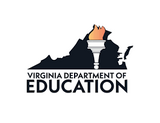
This science instructional plan (SIP) supports the Science Standards of Learning.
- Subject:
- Living Systems and Processes
- Science
- Material Type:
- Lesson
- Lesson Plan
- Author:
- Myra Thayer
- Anne Petersen
- Gregory MacDougall
- Date Added:
- 01/28/2021

This science instructional plan (SIP) supports the Science Standards of Learning.

Slime is a fun and amazing invention. While many adults do not enjoy the mess that comes along with slime, students of all ages have come to enjoy this unique creation. So what phases of matter would we classify slime? It has properties of a solid, while also having properties of a liquid. The goal of this activity is for students to make observable changes to a provided slime recipe to create a slime that acts more like a solid than a liquid. The student will identify that the slime recipe is the basic algorithm, or steps taken to get a particular result. The student will modify the recipe by measuring and adding more “magic water.” Looping, or repeating the desired actions until the desired outcome is achieved. The student will record their observations.

Students will use block code to include loops to demonstrate the sun, Earth and moon rEnglishtions to each other that lead phases of the moon.

Students will learn about how the weather and seasonal changes affect the clothing people wear and the activities people do. Students will have an opportunity to learn about and make a loop.

Teachers will be able to use this lesson virtually or in-person! This Google Slide deck lesson can also be downloaded as a PowerPoint! Speaker notes are included which make it easy for teachers or substitutes to teach this lesson!Literacy Standards: 4.5 a, b, c, f & jScience Standards: 4.3 a & b 4.8 a, b, c & dSocial Studies Standards: VS.9 a VS.10 b & c Authors: Melissa DiAscro, Rebecca Fausett, Annie Schmidt, Lindsey Bruce, & Kari Nugent(Hampton Oaks Elementary School)
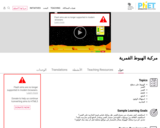
Can you avoid the boulder field and land safely, just before your fuel runs out, as Neil Armstrong did in 1969? Our version of this classic video game accurately simulates the real motion of the lunar lander with the correct mass, thrust, fuel consumption rate, and lunar gravity. The real lunar lander is very hard to control.
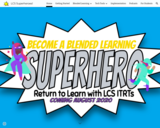
Charles Yarbrough with Lynchburg provided this link to their web site created to support teachers moving to blended learning. It is full of great resources, mainly for teachers but a few for students too!

The ITRTs of Lynchburg have put together a web page to provide support in the form of both podcasts and blog posts. The most recent topics have been focused on distance learning, with new info on hybrid learning to come in the near future!
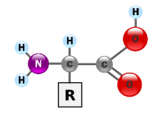
Carbon and other elements play a key role in determining the structure and function of macromolecules needed to sustain life processes. Life processes include growth and repair, reproduction, gas exchange, metabolism, and response. Cells make a variety of macromolecules needed for life processes from a relatively small set of monomers. These macromolecules include carbohydrates, proteins, nucleic acids, and lipids. This module was developed by Kristin Scheible as part of a Virginia Commonwealth University STEM initiative sponsored by the Virginia Department of Education.

Students enjoy this Jeopardy game review of introductory chemistry, including organic compounds and chemical reactions.

Students use what they know about shadows to design and create a structure to provide shade.

The kindergarteners need games to play during indoor recess. Students will design and create a simple game or maze that uses a magnet to make something move. The object of the game should be simple so that kindergarteners can understand the directions and successfully play it. The game should also be neat and appealing so that kindergarten students will want to play it.

This is a booklet containing 37 space science mathematical problems, several of which use authentic science data. The problems involve math skills such as unit conversions, geometry, trigonometry, algebra, graph analysis, vectors, scientific notation, and many others. Learners will use mathematics to explore science topics related to Earth's magnetic field, space weather, the Sun, and other related concepts. This booklet can be found on the Space Math@NASA website.
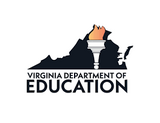
Science Instructional Plans (SIPs) help teachers align instruction with the Science Standards of Learning (SOL) by providing examples of how the content and the scientific and engineering practices found in the SOL and curriculum framework can be presented to students in the classroom.
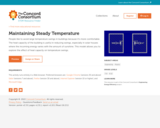
People like to avoid large temperature swings in buildings because it's more comfortable. The heat capacity of the building is useful in reducing swings, especially in solar houses where the incoming energy varies with the amount of sunshine. This model allows you to explore the effect of heat capacity on temperature swings.

Biology students often struggle to understand how it can be that the same two parents will produce genetically different offspring. This lab exercise is a very visual way to demonstrate the "making of a monster" one gene at a time. The resources include a full sheet of vocabulary and instructions, plus a data table to record the crosses. For advanced students, you can take the activity further with a sheet of follow up questions.

Students will use the Makey Makey board to create an interactive poster using weather images, recordings and/or text to display their knowledge of weather. They will use conductive materials to create conductive touchpoints.

In this activity the temperature of a reaction is monitored for different concentrations of reactants.

Modify an existing molecule and observe how different atoms affect the electron distribution within the model.

Repeated motion is present everywhere in nature. Learn how to 'make waves' with your own movements using a motion detector to plot your position as a function of time, and try to duplicate wave patterns presented in the activity. Investigate the concept of distance versus time graphs and see how your own movement can be represented on a graph.